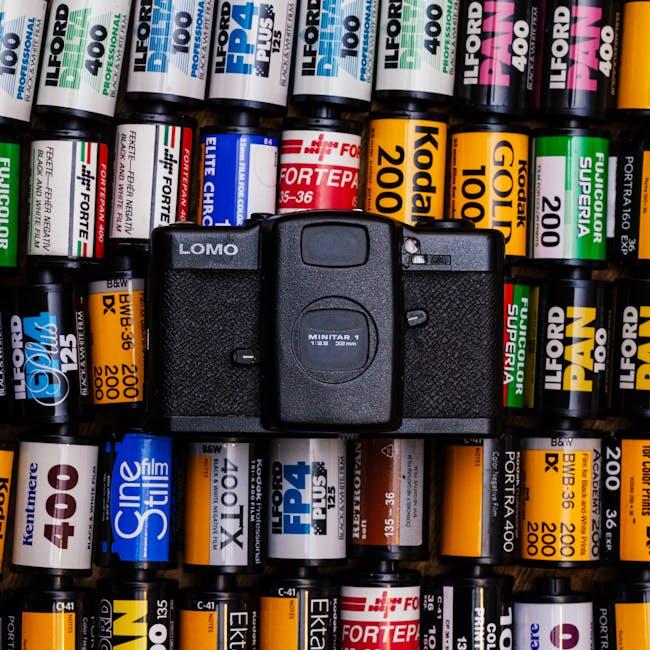In the glittering tapestry of Hollywood, where dreams are spun into celluloid magic, a peculiar phenomenon has been casting its shadow over the silver screen. It’s a whisper of yesteryears, a reverberation of familiar melodies, a surge of déjà vu that tugs at the heartstrings of audiences worldwide. This is the age of nostalgia-driven filmmaking, where the past is not merely a prologue but a thriving, omnipresent muse. Yet, as we revel in the comfort of these cinematic echoes, a pressing question looms large: Is this wistful journey down memory lane subtly suffocating the breath of originality in Hollywood? As the reels spin and the lights dim, we delve into the intricate dance between nostalgia and innovation, exploring whether the golden haze of reminiscence is casting a shadow over the bold, uncharted horizons of storytelling.
The Allure of the Familiar: Why Audiences Crave Nostalgic Films
The allure of the familiar is an undeniable force in cinema. Nostalgic films tap into our collective memory, evoking emotions tied to cherished past experiences. This emotional resonance is a powerful tool, making audiences feel a profound connection to the story and characters. It’s not just about revisiting beloved franchises or reboots; it’s about reliving moments that defined our cultural landscape. As such, filmmakers leverage this nostalgia to create a sense of comfort and belonging, drawing viewers back into theaters for a taste of the past.
However, the question arises: does this trend of leaning on nostalgia hinder the creation of original content? Consider the following impacts:
- Creative Risks: Filmmakers might avoid innovative ideas, fearing they won’t resonate as strongly as familiar stories.
- Market Saturation: The influx of remakes and sequels could crowd out new, original films, making it harder for fresh voices to emerge.
- Audience Expectations: Viewers may become conditioned to expect only familiar narratives, reducing the appetite for novel concepts.

The Creative Conundrum: Balancing Originality and Nostalgia in Scriptwriting
Hollywood’s love affair with nostalgia often walks a tightrope between paying homage and recycling old ideas. On one hand, there’s a certain magic in revisiting beloved universes and characters that have shaped our cultural landscape. On the other, this reliance on familiar tropes can feel like a creative crutch, potentially stifling the birth of fresh, original narratives.
Consider the landscape of recent blockbusters:
- Reboots of classic franchises
- Sequels to long-dormant series
- Remakes of timeless tales
These projects, while commercially successful, raise questions about the innovation in modern scriptwriting. Are we sacrificing the new for the comfort of the known? Balancing the allure of the past with the promise of uncharted storytelling remains a formidable challenge for today’s screenwriters.
Economic Incentives: How Box Office Success Drives Sequel Mania
When a film achieves monumental box office success, it acts as a green light for studios to dive headfirst into sequel production. Economic incentives play a crucial role in this decision-making process. A hit movie can generate not only direct revenue but also a reliable fan base eager for more content. This leads to a snowball effect where studios are more inclined to produce sequels rather than invest in untested, original ideas.
- Lower Risk: Sequels often guarantee a certain level of audience turnout, reducing financial risks.
- Brand Loyalty: Successful franchises create brand loyalty, ensuring repeat customers.
- Merchandising: Popular sequels boost sales of merchandise, further adding to the revenue stream.
In this landscape, original content often takes a backseat, as the allure of high returns from sequels becomes irresistible. Studios prioritize projects that promise immediate financial gains, thereby perpetuating a cycle that favors familiarity over innovation.

Fostering Innovation: Strategies for Encouraging Fresh Ideas in Hollywood
In an industry where nostalgia often reigns supreme, it can be challenging to carve out space for fresh, innovative ideas. However, there are several strategies that can help cultivate a more creative environment in Hollywood:
- Encourage Diverse Voices: By promoting inclusivity and ensuring that diverse voices are heard, studios can tap into a wealth of untold stories and unique perspectives.
- Invest in Original Screenplays: Allocating resources to develop original screenplays can reduce the dependency on reboots and sequels, allowing for more groundbreaking narratives to emerge.
- Collaborative Workshops: Hosting writer’s workshops and think tanks where creators can brainstorm and collaborate can foster a community of innovation and experimentation.
By implementing these strategies, Hollywood can strike a balance between leveraging beloved classics and nurturing the next generation of original content, ensuring the industry remains vibrant and forward-thinking.































